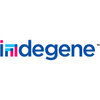
i
SG
Analytics
Filter interviews by
SG Analytics Interview Questions and Answers
59 Interview questions
A DCF analysis estimates the value of an investment based on its expected future cash flows, discounted back to present value.
Forecast Cash Flows: Estimate the future cash flows the investment will generate, typically for 5-10 years. For example, a company might project $1M in cash flow next year, growing at 5% annually.
Determine Terminal Value: Calculate the value of cash flows beyond the forecast period using me...
Enterprise Value (EV) measures a company's total value, often used as a comprehensive alternative to market capitalization.
Formula: EV = Market Capitalization + Total Debt - Cash and Cash Equivalents. For example, if a company has a market cap of $100M, $20M in debt, and $10M in cash, EV = $100M + $20M - $10M = $110M.
Market Capitalization: This is calculated as the share price multiplied by the total number of out...
A cash flow statement tracks the inflow and outflow of cash in a business over a specific period.
Divided into three sections: operating, investing, and financing activities.
Operating activities include cash received from customers and cash paid to suppliers.
Investing activities involve cash spent on purchasing assets or cash received from selling assets.
Financing activities cover cash flows from borrowing, repayin...
EBITDA transitions from the income statement to the cash flow statement by adjusting for non-cash items and changes in working capital.
EBITDA is calculated on the income statement as earnings before interest, taxes, depreciation, and amortization.
To move to cash flow, start with EBITDA and adjust for non-cash expenses like depreciation and amortization.
Next, account for changes in working capital, such as accounts...
Amortization and depreciation are methods of allocating costs of assets over time, but they apply to different types of assets.
Amortization applies to intangible assets, like patents or copyrights.
Depreciation applies to tangible assets, like machinery or vehicles.
Amortization is typically calculated using the straight-line method over the asset's useful life.
Depreciation can be calculated using various methods, i...
ESG refers to Environmental, Social, and Governance criteria used to evaluate companies' ethical impact and sustainability practices.
Environmental: Focuses on a company's impact on the planet, e.g., carbon emissions reduction initiatives.
Social: Examines how a company manages relationships with employees, suppliers, customers, and communities, e.g., diversity and inclusion programs.
Governance: Involves a company's...
I excel in analytical skills but sometimes struggle with public speaking, which I am actively working to improve.
Strength: Strong analytical skills; I can analyze complex financial data to identify trends.
Example: In my last role, I developed a financial model that improved forecasting accuracy by 20%.
Weakness: Public speaking; I often feel nervous when presenting to large groups.
Example: To address this, I've joi...
Reconciliation is the process of ensuring two sets of records are in agreement and any discrepancies are resolved.
Reconciliation involves comparing financial statements, bank statements, or other records to identify and rectify any discrepancies.
It is important for ensuring accuracy in financial reporting and preventing fraud.
Examples include reconciling bank statements with accounting records, matching invoices w...
Debt equity ratio is a financial ratio that indicates the proportion of debt used to finance a company's assets relative to the amount of equity.
Debt equity ratio is calculated by dividing total debt by total equity.
It helps assess a company's financial leverage and risk exposure.
A high debt equity ratio indicates higher financial risk, while a low ratio suggests lower risk.
For example, if a company has $1 million...
A DCF model is a valuation method used to estimate the value of an investment based on its expected future cash flows.
Discounted Cash Flow (DCF) model calculates the present value of expected future cash flows by discounting them back to their present value.
It involves forecasting future cash flows, determining a discount rate, and calculating the net present value.
The formula for DCF is: DCF = CF1/(1+r)^1 + CF2/(...
SG Analytics Interview Experiences
74 interviews found
I appeared for an interview in Apr 2025, where I was asked the following questions.
- Q1. What is the formula for Enterprise Value
- Ans.
Enterprise Value (EV) measures a company's total value, often used as a comprehensive alternative to market capitalization.
Formula: EV = Market Capitalization + Total Debt - Cash and Cash Equivalents. For example, if a company has a market cap of $100M, $20M in debt, and $10M in cash, EV = $100M + $20M - $10M = $110M.
Market Capitalization: This is calculated as the share price multiplied by the total number of outstand...
- Q2. Can you explain the process of conducting a Discounted Cash Flow (DCF) analysis?
- Ans.
A DCF analysis estimates the value of an investment based on its expected future cash flows, discounted back to present value.
Forecast Cash Flows: Estimate the future cash flows the investment will generate, typically for 5-10 years. For example, a company might project $1M in cash flow next year, growing at 5% annually.
Determine Terminal Value: Calculate the value of cash flows beyond the forecast period using methods...
I applied via Referral and was interviewed in Aug 2024. There was 1 interview round.
(3 Questions)
- Q1. Food accomdation
- Q2. Talent person database
- Q3. Excel python data visualization
Interview Preparation Tips
I applied via Referral and was interviewed in Dec 2024. There was 1 interview round.
(2 Questions)
- Q1. Tell me about yourself?
- Q2. Strength and weakness
- Ans.
I excel in analytical skills but sometimes struggle with public speaking, which I am actively working to improve.
Strength: Strong analytical skills; I can analyze complex financial data to identify trends.
Example: In my last role, I developed a financial model that improved forecasting accuracy by 20%.
Weakness: Public speaking; I often feel nervous when presenting to large groups.
Example: To address this, I've joined a...
(2 Questions)
- Q1. Scenario based questions
- Q2. And project related on agile methodology
Interview Preparation Tips
I applied via Approached by Company and was interviewed in May 2024. There was 1 interview round.
(4 Questions)
- Q1. Tell me about yourself?
- Q2. How you will contribute to the company growth?
- Ans.
I will contribute to company growth by leveraging my data analysis skills to identify trends, optimize processes, and make data-driven decisions.
Utilizing data analysis techniques to identify trends and patterns that can inform strategic decisions
Optimizing processes by analyzing data to identify inefficiencies and areas for improvement
Creating data visualizations and reports to communicate insights and recommendations...
- Q3. What is the hedge fund?
- Ans.
A hedge fund is an investment fund that pools capital from accredited individuals or institutional investors and invests in a variety of assets.
Hedge funds are typically only accessible to high-net-worth individuals or institutional investors.
They often use a variety of strategies to generate returns, including long and short positions, leverage, and derivatives.
Hedge funds charge both a management fee and a performanc...
- Q4. Wht you understand by links between financial statements?
- Ans.
Links between financial statements refer to the relationships and connections among the income statement, balance sheet, and cash flow statement.
Financial statements are interconnected and provide a comprehensive view of a company's financial performance.
The net income from the income statement is used to calculate retained earnings on the balance sheet.
Changes in cash flow from the cash flow statement impact the cash ...
Interview Preparation Tips
I applied via Company Website and was interviewed in Feb 2024. There were 2 interview rounds.
(1 Question)
- Q1. General questions regarding the past experience and some questions related to ESG Terminology; such as what is Sustainability and difference between sustainability & ESG? etc
- Ans. ESG is a rating parameter for the sustainabilile practices of companies.
(5 Questions)
- Q1. What is environmental, social, governance of a company?
- Ans.
Environmental, social, governance (ESG) refers to the three central factors in measuring the sustainability and ethical impact of an investment in a company.
Environmental factors focus on a company's impact on the environment, such as carbon emissions, waste management, and resource conservation.
Social factors assess how a company manages relationships with employees, suppliers, customers, and the communities in which ...
- Q2. What certification company should have for Environmental compliance and health & Safety management?
- Ans.
The most recognized certification company for Environmental compliance and Health & Safety management is ISO.
ISO 14001 certification for Environmental compliance
ISO 45001 certification for Health & Safety management
Other relevant certifications include OHSAS 18001 and ANSI/AIHA Z10
- Q3. What's the difference between independent and dependent board of directors?
- Ans.
Independent board members are not affiliated with the company, while dependent board members have ties to the company.
Independent board members are considered to be more objective and less influenced by company interests.
Dependent board members may include executives, shareholders, or individuals with close ties to the company.
Independent board members are often brought in to provide unbiased perspectives and oversight...
- Q4. What are the roles of Independent directors in company?
- Q5. What are the documents considered in the ESG Research process?
- Ans.
Documents considered in ESG Research process include company reports, sustainability reports, industry publications, and third-party research.
Company reports such as annual reports and financial statements
Sustainability reports detailing environmental, social, and governance practices
Industry publications providing insights on ESG trends and best practices
Third-party research reports from organizations like MSCI or Sus...
Interview Preparation Tips
- Esg
- Sustainability
(5 Questions)
- Q1. Tell me about the Pillars of esg
- Ans.
ESG stands for Environmental, Social, and Governance. The pillars of ESG are the three key factors used to measure the sustainability and ethical impact of an investment in a company.
Environmental: Focuses on a company's impact on the environment, such as carbon emissions, waste management, and resource conservation.
Social: Considers how a company manages relationships with employees, suppliers, customers, and the comm...
- Q2. What is clean energy
- Ans.
Clean energy refers to energy sources that produce minimal or no harmful emissions, such as solar, wind, hydro, and geothermal power.
Clean energy sources are renewable and sustainable, unlike fossil fuels.
Examples of clean energy sources include solar power, wind power, hydroelectric power, and geothermal power.
Clean energy helps reduce greenhouse gas emissions and combat climate change.
Investing in clean energy techno...
- Q3. What is scope 1 2 3
- Ans.
Scope 1, 2, and 3 refer to different categories of greenhouse gas emissions.
Scope 1 emissions are direct emissions from sources that are owned or controlled by the organization, such as fuel combustion in boilers or vehicles.
Scope 2 emissions are indirect emissions from the generation of purchased electricity, heat, or steam consumed by the organization.
Scope 3 emissions are all other indirect emissions that occur in t...
- Q4. What is scope 4
- Ans.
Scope 4 refers to the indirect emissions that occur in the value chain of the reporting company, including emissions from purchased goods and services, transportation, and waste disposal.
Scope 4 emissions are not included in the traditional greenhouse gas reporting scopes 1, 2, and 3.
These emissions are often more difficult to measure and manage compared to direct emissions.
Examples of scope 4 emissions include emissio...
- Q5. What is TCFD GRI SASB
- Ans.
TCFD, GRI, and SASB are frameworks used for reporting on climate-related financial disclosures, sustainability, and material ESG factors.
TCFD stands for Task Force on Climate-related Financial Disclosures, providing recommendations for voluntary climate-related financial disclosures by companies.
GRI refers to Global Reporting Initiative, offering a framework for sustainability reporting to help organizations understand...
Interview Preparation Tips
I applied via Referral and was interviewed in Jun 2024. There was 1 interview round.
(2 Questions)
- Q1. Elmgknknksnsklnsdknlknknklnlndnlnvdndndjk
- Q2. Dncldndnvlnvdknvdlknvdnkdlnkdvn
I appeared for an interview in Mar 2025, where I was asked the following questions.
- Q1. Knowledge on ms Office
- Q2. Knowledge on esg
I applied via Recruitment Consulltant and was interviewed in Mar 2024. There were 2 interview rounds.
(4 Questions)
- Q1. Tell me about yourself.
- Ans.
I am a detail-oriented analyst with a passion for data-driven decision-making and a strong background in research and analysis.
Educational Background: I hold a degree in Economics, where I developed strong analytical skills through coursework and projects.
Professional Experience: I interned at XYZ Corp, where I analyzed market trends and presented findings to senior management, influencing strategy.
Technical Skills: Pr...
- Q2. What is vlookup and its use?
- Ans.
VLOOKUP is a function in Excel used to search for a value in a table and return a corresponding value from another column.
VLOOKUP stands for 'vertical lookup'
It is commonly used to search for a value in the leftmost column of a table and return a value in the same row from a specified column
Syntax: =VLOOKUP(lookup_value, table_array, col_index_num, [range_lookup])
Example: =VLOOKUP(A2, B2:D10, 3, FALSE) - searches for t...
- Q3. What are your hobbies?
- Q4. Questions based on your resume
(1 Question)
- Q1. What are your salary expectations?
Interview Preparation Tips
Top trending discussions






SG Analytics Interview FAQs
Some of the top questions asked at the SG Analytics interview -
The duration of SG Analytics interview process can vary, but typically it takes about less than 2 weeks to complete.
Tell us how to improve this page.
SG Analytics Interviews By Designations
- SG Analytics Consultant Interview Questions
- SG Analytics Associate Analyst Interview Questions
- SG Analytics Analyst Interview Questions
- SG Analytics Senior Analyst Interview Questions
- SG Analytics Data Analyst Interview Questions
- SG Analytics Motion Graphic Designer Interview Questions
- SG Analytics Senior Equity Analyst Interview Questions
- SG Analytics Manager Interview Questions
- Show more
Interview Questions for Popular Designations
Overall Interview Experience Rating
based on 66 interview experiences
Difficulty level
Duration
Interview Questions from Similar Companies
SG Analytics Reviews and Ratings
based on 582 reviews
Rating in categories
|
Associate Analyst
458
salaries
| ₹3 L/yr - ₹6.7 L/yr |
|
Analyst
360
salaries
| ₹3.8 L/yr - ₹8 L/yr |
|
Senior Analyst
238
salaries
| ₹8.1 L/yr - ₹13.9 L/yr |
|
Consultant
220
salaries
| ₹2.5 L/yr - ₹5 L/yr |
|
Lead Analyst
78
salaries
| ₹11 L/yr - ₹18 L/yr |

IKS Health

Crisil

Indegene

Acuity Knowledge Partners
- Home >
- Interviews >
- SG Analytics Interview Questions












